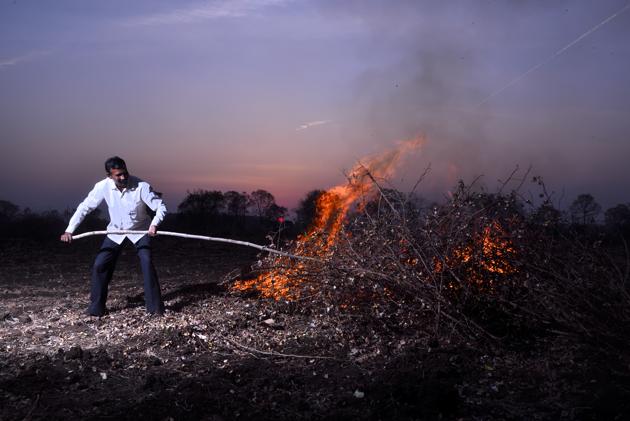Opinion: What Indian states must do to curb air pollution
State governments can make it legally mandatory for the city, state or district administration to meet targets. Not doing so within a stipulated time could be linked to disbursal of development funds, for example
The World Health Organization’s (WHO) air pollution and child health report released on Monday adds to evidence that air pollution is causing health damage and deaths worldwide, including in India. Instead of spending time questioning the evidence, India must establish timebound strategies to deal with the crisis.

The Centre is yet to release the National Clean Air Programme (NCAP) with a goal to meet the annual air quality safe standard at all locations within a specified period. But the draft released in April did not set a time frame for reaching the target. The ministry since then has said that the draft has been revised and finalised with timebound targets.
One of the targets being considered is to reduce PM 2.5 (fine, respirable pollution particles) concentrations by 35% in the first five years of NCAP implementation, in more than a 100 cities, which have not met the safe standard.
About 80 city air pollution action plans under NCAP have been finalised by the ministry; 36 others are being considered. The environment ministry on various occasions has been sceptical of premature mortality data released by global reports. The Central Pollution Control Board (CPCB) has commissioned some local health studies to understand health impacts of air pollution but perhaps there is no time to waste. Large scale cohort studies will help India document the health burden but Indian doctors and scientists are already raising alarm bells on severe air pollution levels.
The NCAP has to have a clear implementation strategy to be able to verify if cities are on track to meet targets. Only a handful of cities have source apportionment studies that clearly lay out which are the major pollution sources in the region. A couple of such studies have been conducted for Delhi. IIT Kanpur is currently conducting source apportionment studies for Kanpur and Agra. One way to address specific local sources of air pollution is to immediately conduct source apportionment studies for major pollution hotspots and then devise plans to reduce emissions from major sources. State governments can use satellite measurements and a dense network of ground monitoring stations to check how their strategy is affecting pollution levels.
State governments can make it legally mandatory for the city, state or district administration to meet targets. Not doing so within a stipulated time could be linked to disbursal of development funds, for example.
Covering rural areas that have a high burden of household air pollution will be crucial in reducing morbidity and mortality from air pollution, by verifying if they have LPG coverage and transparently releasing industrial emissions data. It is also important to have clear strategies in NCAP for villages, towns and cities in the vicinity of polluting industries like thermal power plants, coal mines, industries releasing hazardous waste which cause extremely high air pollution exposure but are invisible in government policies because there is little or no pollution monitoring here.
China’s Air Pollution Prevention and Control Action Plan (APPCAP) (2013-2017) has already started showing results. A recent study by Peking University School of Public Health has found that the annual average concentration of PM 2.5 decreased by 33.3% in 74 key cities where the plan was implemented in the past five years. This reduction may have led to 44,240 fewer air pollution-linked deaths in 74 Chinese cities, according to the study. China’s success story can be studied to refine the NCAP.
There is another global example of legal remediation. The European Commission took the UK, France, Germany, Hungary, Italy and Romania to the European Court of Justice earlier this year for not meeting nitrogen dioxide standards. Even as India waits for the NCAP to be notified, the focus doesn’t need to be limited to Delhi-NCR alone, which already has an air quality monitoring network of 38 real time stations and a graded response action plan for high air pollution days and a comprehensive action plan with medium and long-term strategies.
Environmental lawyers say there is no dearth of legal remedies for air pollution which includes sections in the Air Act, the Environment Protection Act and section 133 of the Code of Criminal Procedure. The CPCB’s notification dated April 11, 1994, also mandates that national air quality standards should be met on 98% of days, which is violated in almost all cities. Article 21 of the Constitution guarantees every Indian the right to live in a clean and healthy environment. Communities affected by air pollution can always use it to demand clean air.
jayashree.nandi@htlive.com



